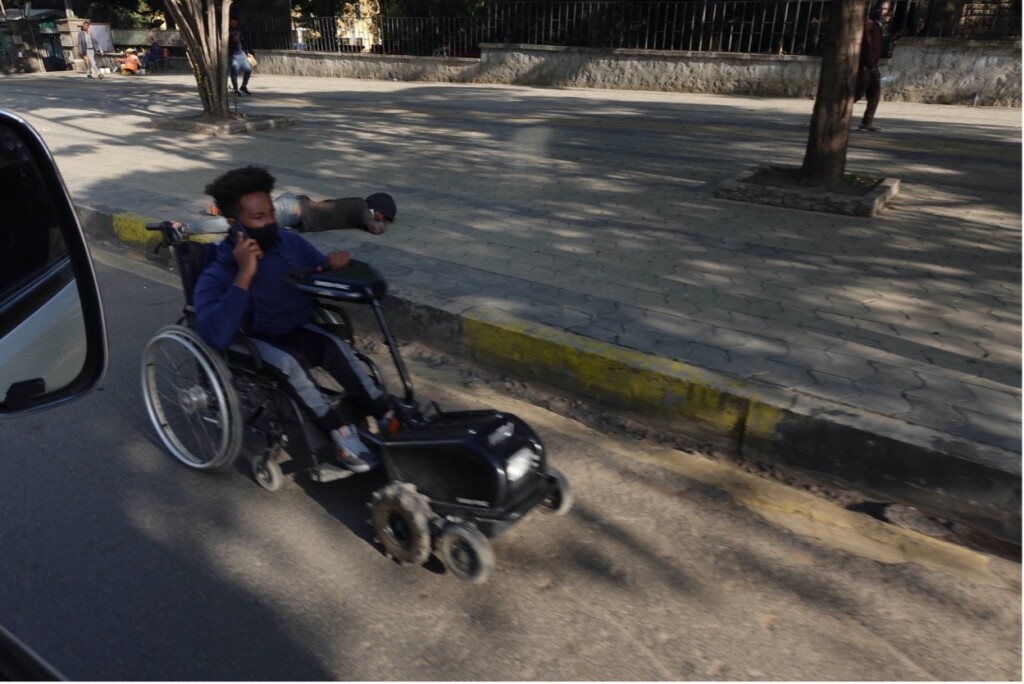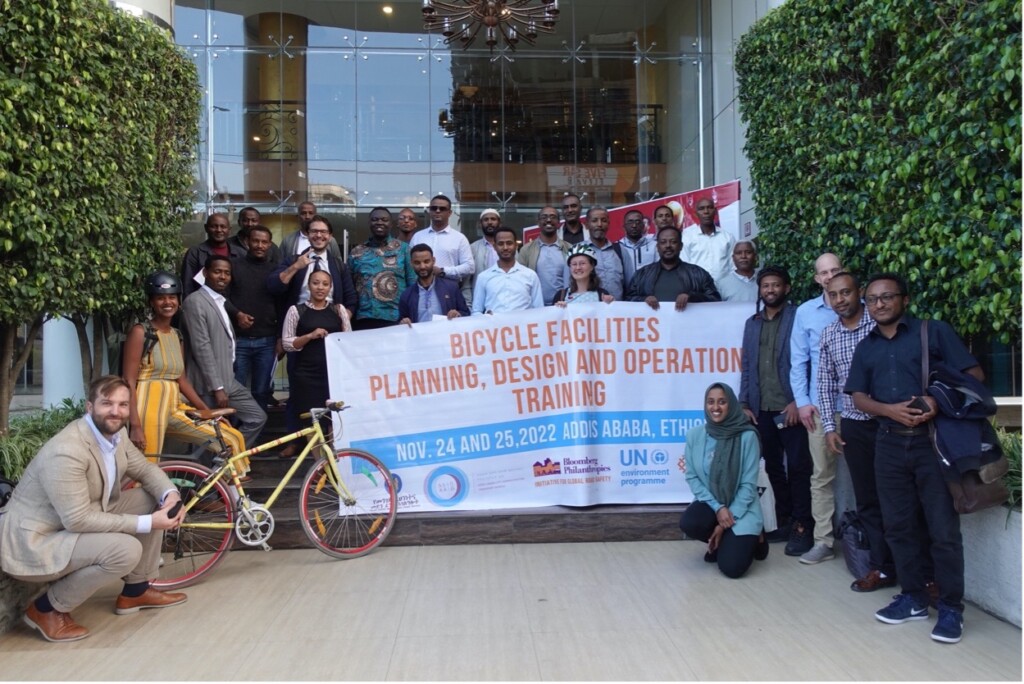Wheeling towards a slow-but-safe cycling network in Addis Ababa
In October 2022, Mobycon arrived in Addis Ababa, Ethiopia, for a week of capacity-building with the cycling and walking planners of the city, ending in a day-long workshop that included planners from other Ethiopian cities and NGOs like Menged Le Sew, Ethiopia’s Open Streets movement. Supported by the World Resources Institute, the brief entrusted to myself and Robin van der Griend was to contextualise the cycling knowledge we had brought with us so that our presentations, workshops and informal discussions would transmit know-how that was relevant and realistic. Over coffee in Amsterdam before our flight, however, Robin and I discussed a difficult question: to what extent can our cycling knowledge – and our presentations full of Dutch cityscapes – create value for people in a city where so much is radically different, from income levels, to democratic traditions, to the culture of public space?

Our first two days were spent on extensive site visits, during which the Addis Ababa Transport Bureau (AATB) showed us around their city of 5.5 million inhabitants, living in an urban fabric comprising informal settlements on the surrounding hillsides, tightly-packed formal housing on a regular street grid, high-income districts of tower blocks and gated housing estates for a rapidly expanding urban middle class. In contrast to South Africa, where I was born and raised, and to Uganda, where Robin lived for half a year doing fieldwork, urban informality is somewhat limited in Addis, which has a strong tradition of central state planning. Security forces were a constant presence on the streets, and public transport seemed highly uniform and regulated, in comparison to the diversity and variety of what are called minibus taxis in South Africa and matatus in Uganda.

However, as our hosts spent hours generously and patiently guiding us through city neighbourhoods, and reviewing the very mixed examples of cycling infrastructure that have been built in recent decades, my doubts about the relevance of our work abated. While the urban experience of Addis Ababa is profoundly different than that of Amsterdam, Utrecht or Rotterdam, its residents felt familiar to us: they take pleasure in walking, window-shopping and doing their groceries close to home; they want their children to be able to get to school safely and on time; and they would prefer a mobility system that does not cost much time or money, or make too much noise, while getting everyone where they need to go. Over the following days, Robin and I realised that the kind of solutions Mobycon advocates for and designs could be relevant in Addis, if we could properly communicate the ‘active ingredient’ behind each design. This also meant closely reviewing every slide of the presentations we had brought with us so that we could demonstrate how the core concept of a Dutch design might look in a city like Addis, where micro-businesses made intensive use of sidewalks.


Robin sketched continuous pedestrian sidewalks that extended across side roads, showing that defensive design (such as concrete elements) could be used in place of bollards to slow down motorists by constraining their turning radii. I made sketches of Addis pedestrian life, and especially of the many, many ways that wheeled vehicles – pulled, pushed and pedalled – were used to move freight around the city. We found pictures of low-cost Chinese suppliers who could potentially facilitate a bulk order of cargo bikes adapted for micro-businesses, from food carts to booksellers and shoe repair.

Throughout the week, we adapted our presentations in real time as we learned from questions and discussions from workshop participants, especially the profound expertise (and institutional know-how) of people like Betelihem Tadesse, Iman Abubaker, Siba El-Samra, Kejela Mekonin, and Jiregna Hirpa from the WRI. Our main recommendation, by the end of the week, was that Addis reconsider its emphasis on traditional cycling (on bicycles), and use the Mobycon framework of ‘vehicle families’ to define (and design for) two new groups. The first, ‘slow wheelers’, include wheelchair users, but also microbusinesses on wheels, wheelbarrows, and novice or hesitant cyclists (such as small children), who value safety above directness and speed. This group, we argued, could be accommodated at relatively low cost by adapting sidewalks for mixed walking and cycling, and by adding modal filters to dense neighbourhoods with informal or traditional street patterns. The other group, consisting of faster bicyclists able to tolerate risk and proximity to motor traffic, could be accommodated in the longer term through road space reallocation and robust physical barriers.
Addis Ababa has set a target to deliver 100km of bicycle infrastructure in the next three years. We hope that our perspectives have added value to the city’s deliberations on what kind of cycling infrastructure will make the most immediate and practical difference for residents, and we look forward to working again with the generous and committed group of professionals who showed us such kindness and hospitality.

 ">
">Brett Petzer
‘The hard work and the resources dedicated to making claims for space in a city are a reflection of their true priorities. I want these claims to become more equitable, so that motorists must work as hard to retain parking space as cyclists and pedestrians have to work to gain safe space.’

